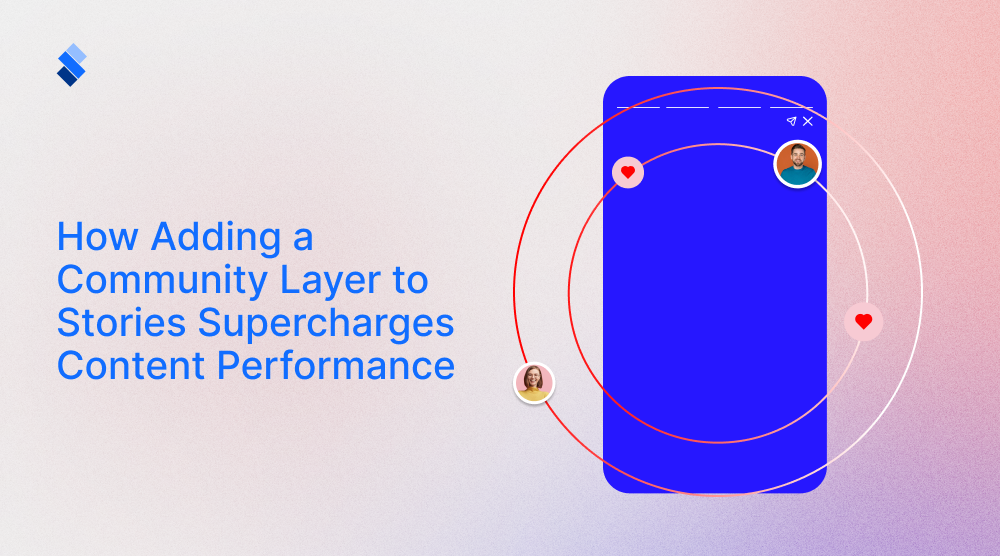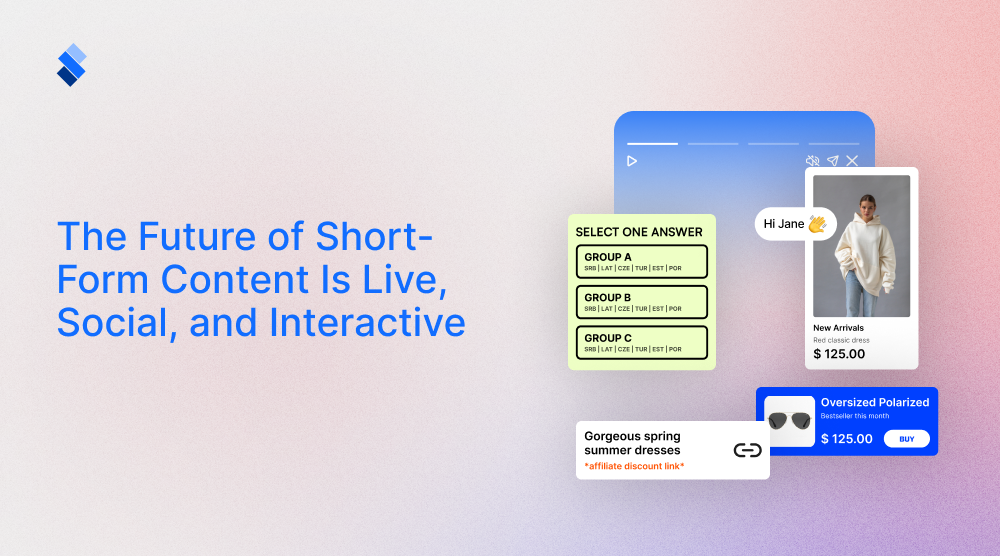Own Your Presence: Why Websites and Apps Beat Social Media Every Time
Stop building your brand on rented land. Discover why owning your website and app is the key to audience loyalty, first-party data, and lasting growth in the age of social media algorithms.

When brands start building their online presence, they often ask themselves “Do I really need a website?”. After all, setting up a social media profile takes much less time and money. And considering that a large part of your audience will likely come from there, why not focus solely on it? Well, while only having a social media profile might seem like an easier option, having your own website (and app, for most brands) is necessary, especially if you plan on scaling up. So, let’s elaborate why brands need to go through the trouble of designing a website & app, and how to do so effectively in modern age of endless content feeds.
The value of ownership
To make things clear right off the bat, your website isn’t just a digital business card. It is not some offhand piece of digital content that you give out to anyone that shows half an interest. If you plan on treating it that way, you will be better of simply running a social media platform.
If you want to make the most from it, you need to treat your website as the cornerstone of your online presence. It is the only place where you have full control of the narrative, the user experience, and the engagement strategies in regards to the viewer. By owning your website in its entirety, you ensure that no third-party decision can ever completely sever your connection to your audience. As such, you’d be smart to design and optimize, both your website and your app, with due diligence.
The first-party data advantage in a privacy-first world
Modern marketing trends put certain demands on brand managers that weren’t preset just a couple of years back. The decline of third-party cookies and increased data privacy regulation has created an environment where first-party data (information willingly shared by customers directly with you) has become the most valuable currency. And as it turns out, your website and app are the most powerful engines for collecting this data in an ethical manner.

When a user creates an account, downloads a guide, or makes a purchase, they are initiating a direct relationship. This provides you with unparalleled insights into their behavior and preferences. With this data at your disposal you can create personalized experiences that build genuine loyalty and drive smarter business decisions. Sufficient to say, you cannot do this with social media platforms as a gatekeeper.
Considering the investment
Another thing to consider is that the economics of rented versus owned channels are starkly different. Investing primarily in social media, while cheap at first, is an ongoing expense. Especially if you want to keep your profile relevant. You must constantly pay, either through advertising spend or the creative labor of adapting to new formats just to maintain visibility, with no lasting equity built.
On the other hand, every investment in your owned properties compounds in value. A well-optimized website page accumulates SEO authority and attracts organic traffic for years. A functional app on a user's home screen is a constant, zero-cost reminder of your brand. This transforms your marketing from a recurring operational cost into a capital investment that builds a durable, appreciating asset. Especially if you know how to reuse old content to better adhere to newer trends.
Freedom to design your website
Owning your website grants you absolute visual design control, a crucial advantage that rented social media profiles can never provide. With this freedom you can meticulously craft every pixel, from the color palette and typography to the layout and interactive elements. By doing so, you can ensure that the entire user experience is a seamless and immersive extension of your brand's identity. You can design intuitive navigation pathways, build trust through strategically placed social proof, and guide users toward conversion with purpose-built calls-to-action. You can also look to connect your website to your app, thus making a seamless omni-channel experience.. And you will avoid the visual noise of competing ads or a platform's generic, one-size-fits-all template.

In contrast, a social media profile forces your brand into a sterile, standardized box, where your identity is diluted amidst uniform menus and algorithmic feeds. Keep in mind that these are designed to prioritize the platform's content, not yours. By having control over the visual environment you’ll be able to transforms a casual visitor into an engaged customer, fostering a branded experience that is both memorable and effective, entirely on your own terms.
The benefit of having an app
Is having a website enough? Well, if designed properly and if optimized for your target audience’s UX, a website can be all you need. But, there are those brand where having a mobile app can do a world of good. After all, mobile app functions as a direct and persistent line of communication to your most engaged customers. And this direct line is right in their pocket. A website is your powerful acquisition engine, drawing in a broad audience through search and marketing efforts.
Meanwhile, an app excels at retention and loyalty. Because it stands as its not platforms, and doesn’t function within a web browser, it offers unparalleled convenience, personalized push notifications, and native features like saved preferences and offline access that a browser cannot match. Together, an app and a website create a powerful synergy that social media can never provide. A website captures interest and funnels users toward a deeper commitment, while the app secures that relationship, fostering habitual engagement and turning occasional buyers into a dedicated community. This owned ecosystem captures invaluable first-party data across the entire customer journey, freeing your brand from the volatile algorithms and rented eyeballs of social platforms. If you properly use it, you can build a sustainable monetisation model based on direct access and true customer loyalty.
Bringing website UX to the 21st century
Now, we can go about further elaborating the benefits of owning your own website, and how this is further boosted by having your own app. But, exciting as it is, the truth of the matter is that you will only get value from each of those is you put in the time and effort in their design. The sad reality is that most websites and apps are ignored by the audience. And it only takes a single instance of the user feeling bored to turn an interested viewer into a lost conversion. So, how to we combat this in the era of content feeds, endless scrolls and click-bait content? Well, there are a couple of things you can do.
The discovery feed
The first thing to forgo are traditional, rigid menus. What instead you need to make use of is a dynamic discovery feed. Ideally, it will be comprised of video, interactive content, and visually rich "stories". Such a feed will fundamentally shift the user experience from a targeted search to an engaging exploration.

While a menu is functional for users who know exactly what they want, a feed mimics the immersive, scrollable interfaces of popular social platforms, which users are already accustomed to. This approach dramatically increases engagement and time-on-site by pushing relevant content, especially if you go the extra mile to personalize it. Through story content it is far easier to sowcas new offerings, and telling a brand story in a more narrative format. Clothing retailer Fashion Nova mastered this. They made great use of feed, user-generated content and new product drops to create a "shoppable magazine" experience. This was a key driver in their rise to over $400 million in revenue, demonstrating the immense commercial potential of an exploratory interface.
Community first
Integrating community content directly into your website’s design is a strategic imperative for transforming passive visitors into a loyal, engaged tribe. While a your own messaging is essential, the authentic voices of your customers serve as powerful social proof that builds unparalleled trust and credibility. Features like user-generated content galleries, client testimonial pages, or other community driven content can drastically change how your users view your online content.

This strategy fundamentally shifts the user experience from a one-way broadcast to a dynamic, multi-voiced conversation, making customers feel seen and valued as part of a collective. Showcasing real-world examples of your community using your products or contributing their ideas not only provides relatable context but also dramatically increases dwell time and pages per session. After all, few things are as trustworthy to visitors as the stories of their peers.
Mobile friendly design
The imperative for a mobile-first website is irrefutable, driven by both user behavior and commercial reality, with over 58% of global website traffic now originating from mobile devices. Ignoring this majority by offering a poor mobile experience has direct consequences. For instance, a one-second delay in mobile load time can impact conversion rates by up to 20%, and 85% of adults expect a company’s mobile site to be as good or better than its desktop version.

Furthermore, this mobile-centric foundation is critical for creating a seamless ecosystem with your native app. A well-optimized mobile website acts as the perfect acquisition and onboarding channel for your app. It can feature prominent app store badges, utilize "smart banners" for easy installation, and ensure a fluid transition. Ideally, the user can seamlessly go from the web browser to the app. This synergy between a mobile-friendly site and a dedicated app creates a frictionless user journey, dramatically increasing the likelihood of converting a one-time mobile visitor into a loyal, engaged app user.
Building a living digital ecosystem
Ultimately, a modern website is not a one-time project but a living ecosystem that requires continuous iteration. Its success is measured not by its launch, but by its performance data. Brand managers must champion a culture of data-driven design, using tools like heatmaps and A/B testing to understand user behavior and validate every change. For example, after The New York Times redesigned its article pages based on user engagement data, it saw a 15% increase in subscribers and a significant boost in pages per session. By treating the website as a dynamic asset that evolves based on user interaction and business goals, brands can ensure it remains a powerful, growth-driving engine.
Final thoughts
In an era where digital presence is often mistaken for a collection of social media profiles, the true foundation of a sustainable brand lies in owning your digital territory. Relying solely on rented platforms means building on someone else’s land. A land where algorithms shift without warning, visibility is a constant expense, and your audience never truly becomes your own. In contrast, a purpose-built website and app create an owned ecosystem where you control the experience, foster genuine relationships, and build lasting equity. Mind you, this isn’t just about having a digital storefront. It’s about creating a dynamic, immersive home for your audience. One that prioritizes meaningful engagement through discovery feeds, community integration, and mobile-first design. By investing in owned channels, you’re not just avoiding the risks of rented eyeballs. You’re crafting a space where trust is nurtured, loyalty is earned, and your brand’s story unfolds on your terms. The future belongs to brands that dare to own their presence, cultivate their community, and design experiences that resonate long after the scroll has ended.






